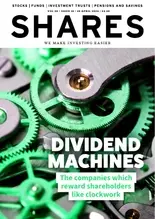
Looking at how global indices have performed year-to-date, it’s probably correct to have a degree of trepidation when it comes to investing.
The FTSE 100 is down by 10.2% so far this year and even the mighty S&P 500 in the US is down by 1.1% in the same time period.
Japan’s Nikkei 225 is another poor performing developed market index, down 9.4% year-to-date.
So are there any markets not in the red and if so what’s driving the performance?
In the US, the Nasdaq 100 has returned 4.5% so far this year. It is made up of 104 of the largest non-financial companies on the wider Nasdaq composite index.
The Nasdaq 100’s biggest constituents are the tech powerhouses such as Apple, Microsoft and Amazon, which together represent almost 30% of the index’s assets.
In terms of year-to-date returns, Amazon has returned 32.1%, Apple is slightly down by 0.2%, with Microsoft up 5%.
In stark contrast, the FTSE 100 contains financial and other cyclical companies including miners among its largest constituents.
Its largest company HSBC (HSBA) is down 6.6% year-date, while its second largest company energy giant BP (BP.) is down 11.4% so far this year.
The index’s third largest company British American Tobacco (BATS) has lost 22.6% year-to-date which goes some way in explaining why the FTSE 100 is the worst performing developed market index.
ACTIVE MANAGEMENT AND VOLATILITY
While index tracking funds might have enjoyed a good run of success in recent years as global markets all seemed on the ascendancy helped by loose monetary policy, a look at the latest market returns suggest that active management may be required to generate superior returns.
The most recent S&P Indices Versus Active Funds (SPIVA) report seems to confirm that point.
According to index provider S&P, 54% of active funds outperformed the S&P United Kingdom BMI in 2017.
Given the volatile start to 2018, this number may increase when the company next produces its report.
The global market sell-off in February has definitely skewed global indices although looking at the Vix index, volatility is well short of the highs it reached on 2 February. On that date the Vix hit 50, it now stands at around 24.
The Vix measures the market’s expectations of 30-day volatility on the S&P 500 and is known colloquially as the ‘fear index’.
When it rises fast, there is often a ‘flight to quality’ with investors selling risk assets such as equities in return for bonds or even gold.
With the vast majority of developed market indices in negative territory so far this year, a well diversified portfolio should minimise the damage compared to a collection of index trackers.
These can be built by individual investors, or by investing in a multi-asset fund which will have holdings in various assets designed to smooth out returns when markets hit turbulence.
Recent developments such as US president Donald Trump looking to start a trade war with China indicate there may be even more volatility ahead.
The question is whether this poor start to the year is indicative of a paper cut to investment returns or are they symbolic of a deep gushing wound?



